50 Years of Mercedes-Benz C111
Some Mercedes-Benz sports cars are well known among car fans. Before World War 2 there was the SSKL, afterwards the 300 SL, which became famous through its gullwing doors. Today, SLS AMG and AMG GT are around, and the future is also covered thanks to the upcoming AMG One. Between the 300 SL of the 1950s and SLS AMG there is a blatant gap of almost 50 years. Anyone who now believes that tere have been no corresponding developments at the brand with the famous star logo during this time is seriously mistaken. Back in the early 1960s, the company’s own designers Paul Bracq and Giorgio Battistella drew a mid-engined supercar, which in the spring of 1966 stood on its wheels in the scale of 1:1 as a rollable concept car made from wood and plastic without interior. It then went into wind tunnel testing and was presented to the Daimler Board of Management as the ‘SLX’. From today’s perspective, the roundish design seems typical of this era of sports cars and the Mercedes styling would undoubtedly have found some buyers. Back at that time the decision was made not to pursue this concept any further and the SLX study was pushed into the vehicle depot without showing it to the public. It was only this year, on the occasion of the 50th anniversary of our current theme vehicle, that the car was taken out of its corner, dust removed and put in the limelight at the Techno Classica in Essen.
Three years after the SLX, work began at Mercedes-Benz on the then innovative and new rotary engines based on the principle devised by Felix Wankel. Many manufacturers placed their hopes in this new concept and acquired licenses to thoroughly test these high-revving engines. In Stuttgart, a special rolling test laboratory in the form of the C111 mid-engined sports car was built for this purpose, which Mercedes-Benz presented to the astonished trade fair visitors at the IAA (Frankfurt Motor Show) in 1969. The design team led by Josef Gallitzendörfer and Bruno Sacco developed a modern styling especially for this purpose, after the very first prototype had been given a pure remedy bodywork made of plastic, which was solely intended to rudimentarily protect the technology components from curious glances and weather influences. Unfortunately, this prototype no longer exists today. The first generation of the C111, presented at the IAA, already showed a special paintwork in a color called ‘Weißherbst’ (white autumn), which contrary to its name is bright orange and still famous today. In addition to the wedge shape and the unusual drive concept with only 600 cubic centimeters of chamber volume, it was above all the gullwing doors that delighted the trade fair visitors. Some rich sports car collectors from all over the world sent blank cheques to Stuttgart in anticipation of an imminent series production. However, Mercedes-Benz made it clear from the outset that production of the C111 wasn’t planned.
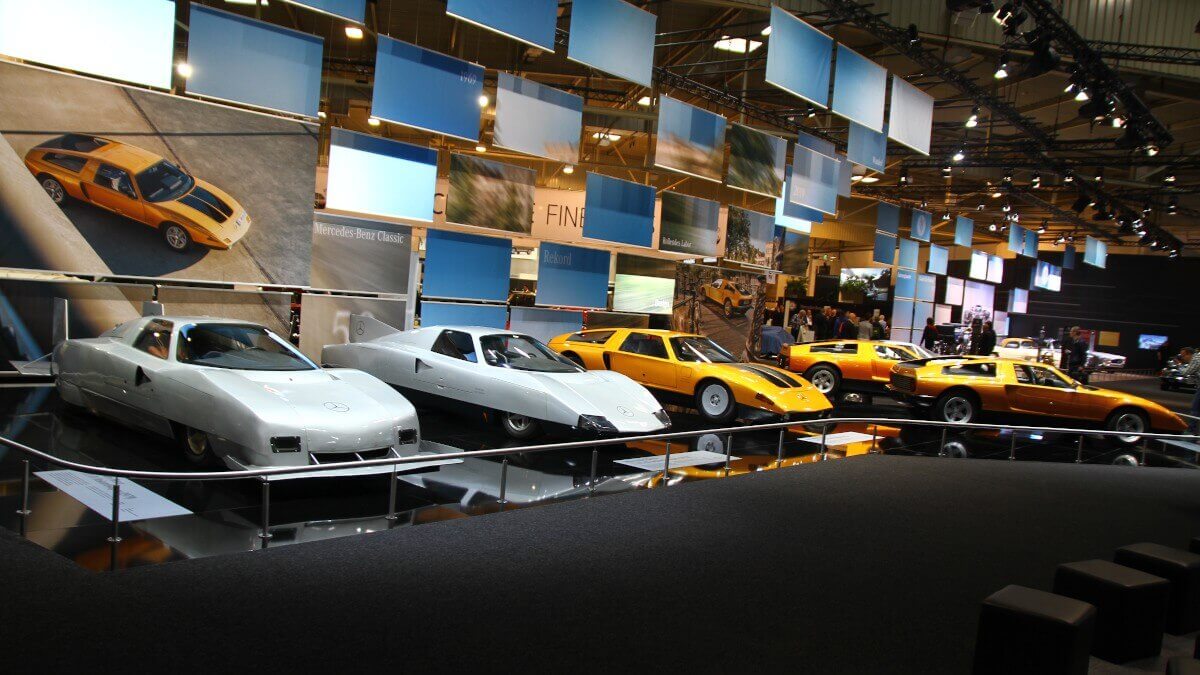



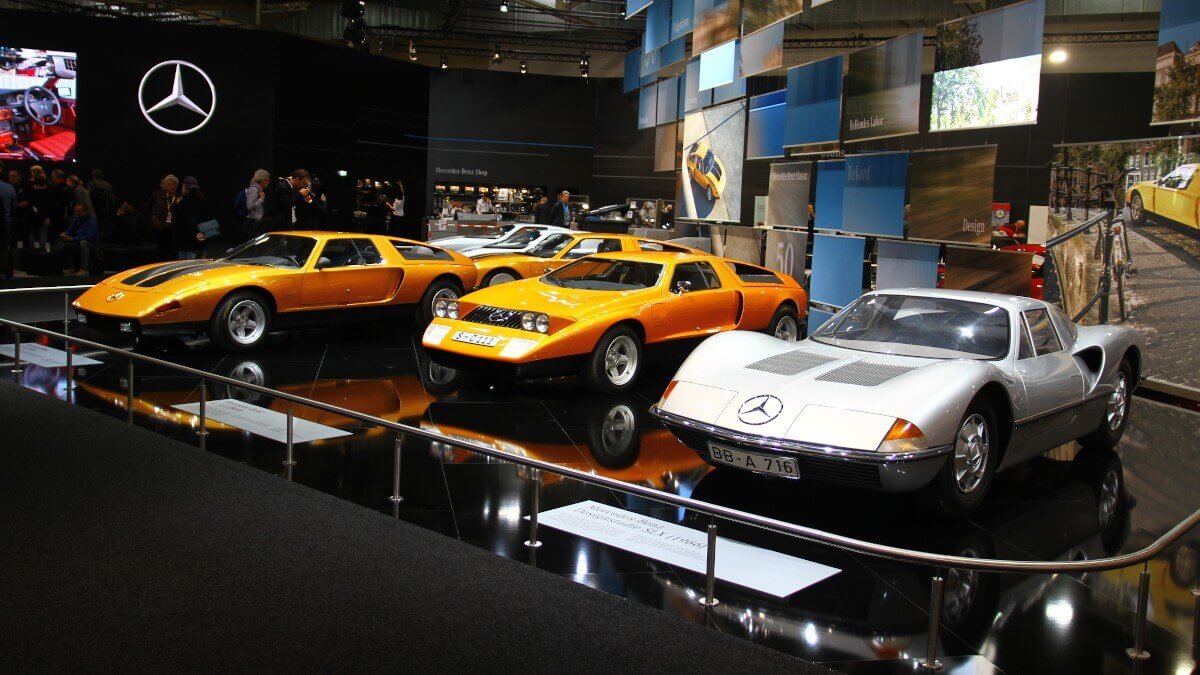



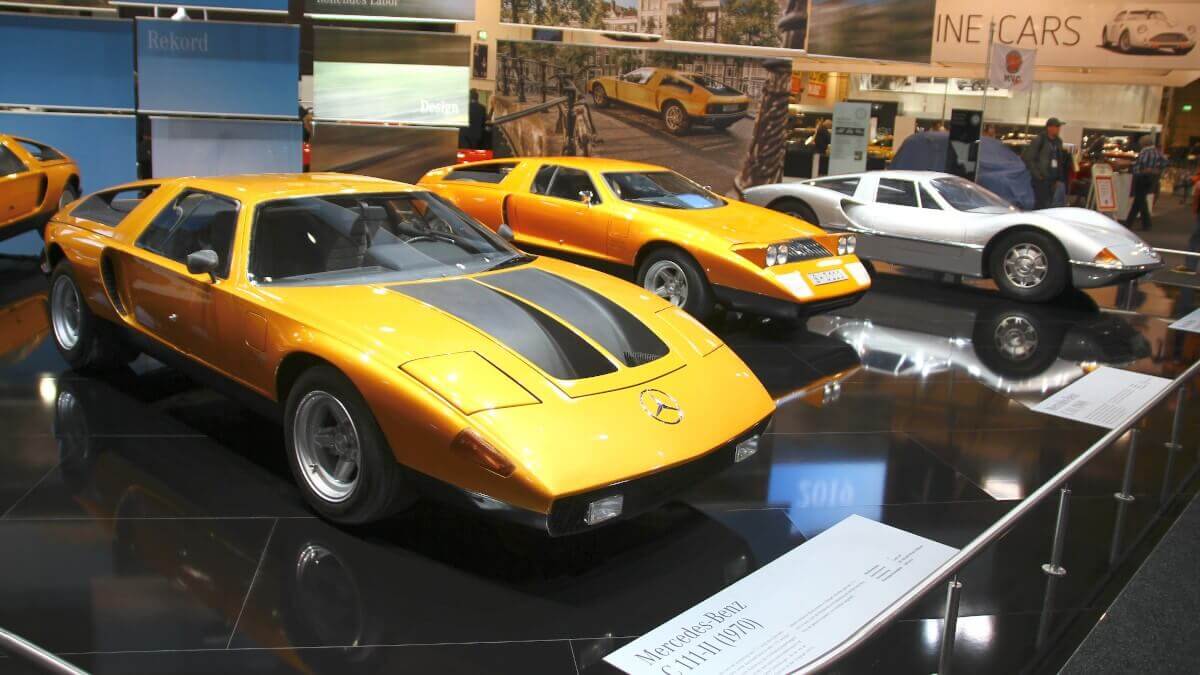



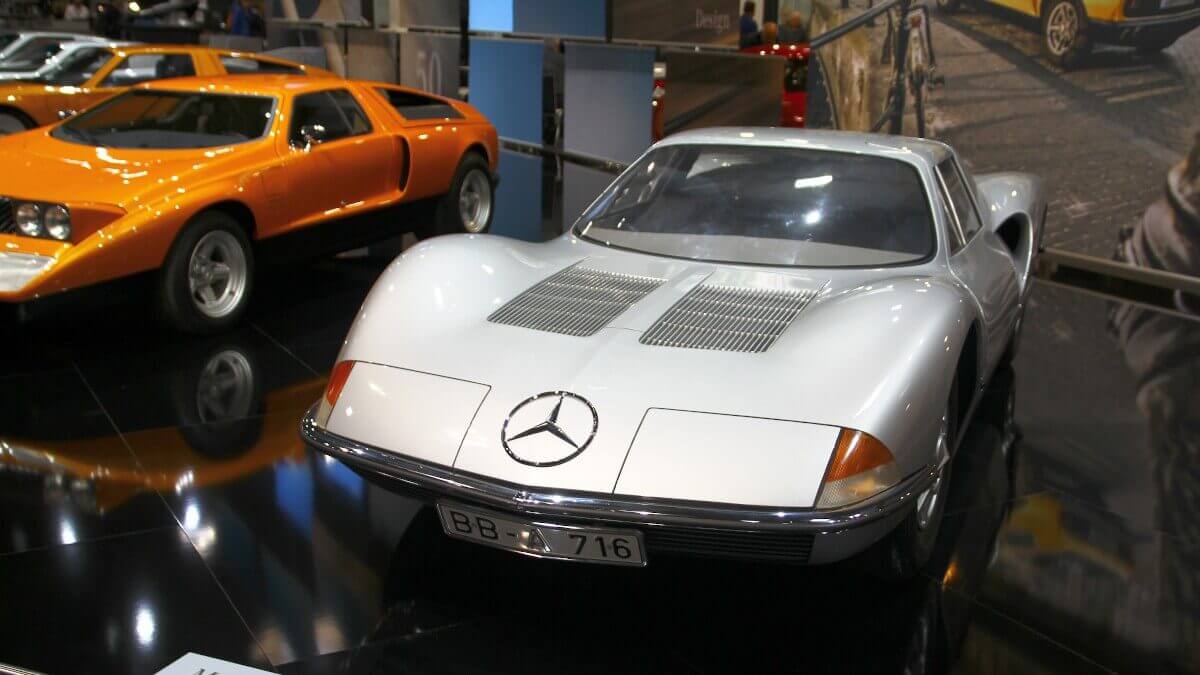



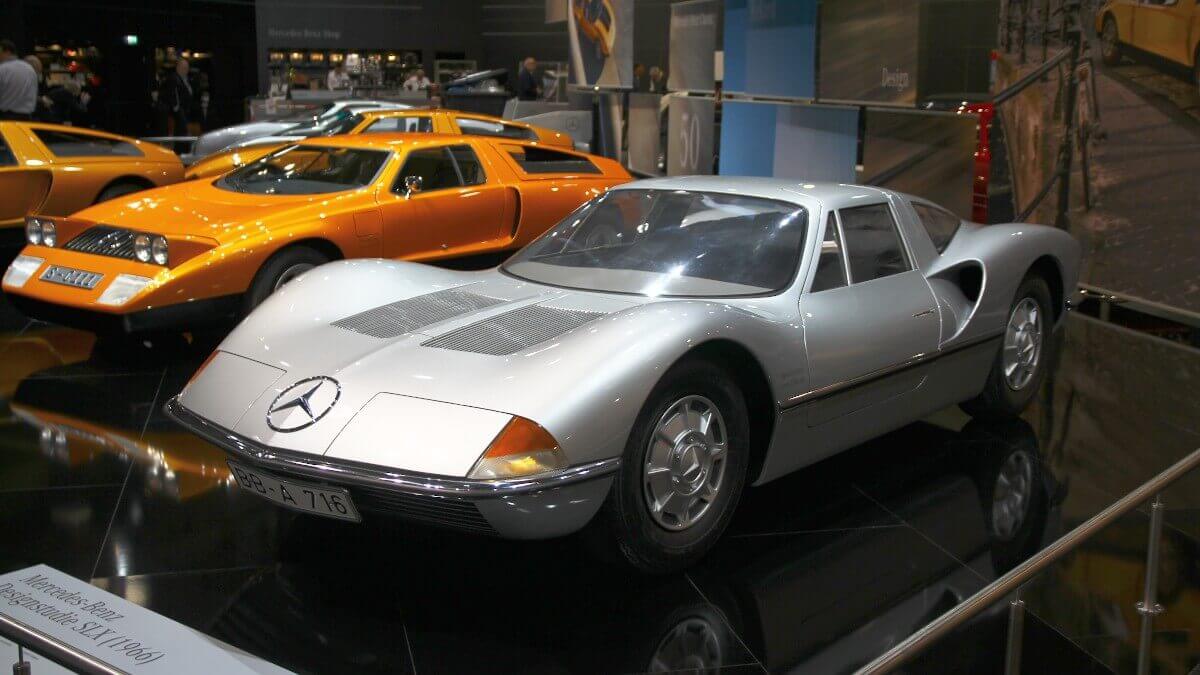



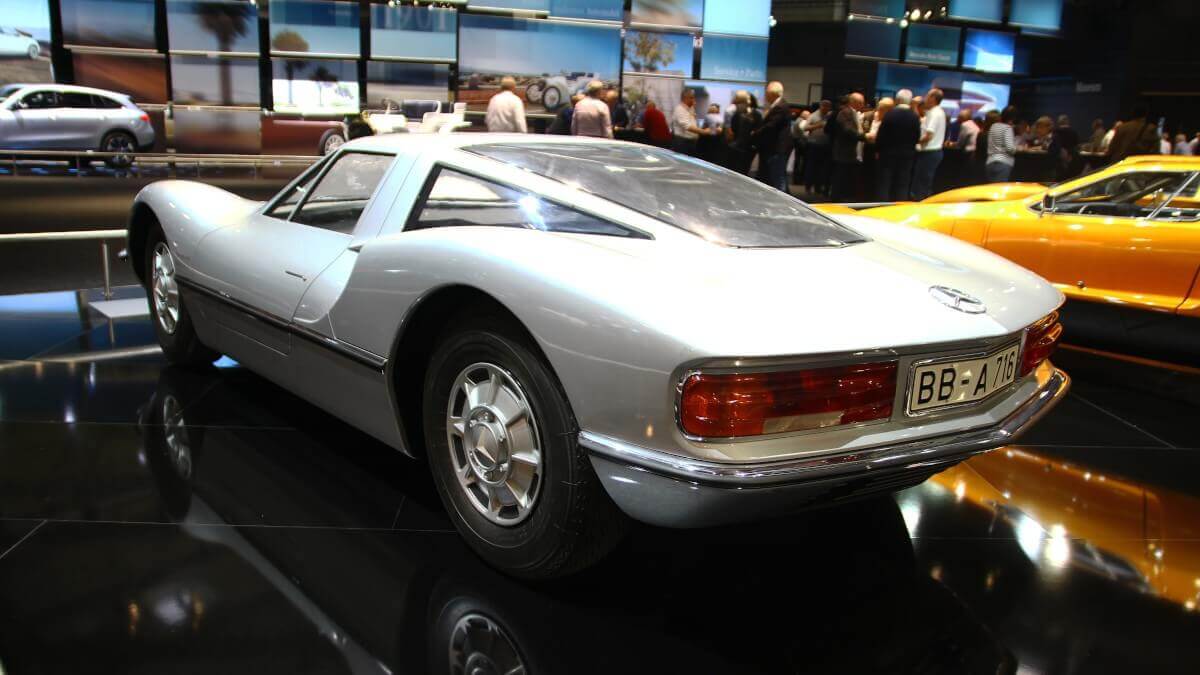



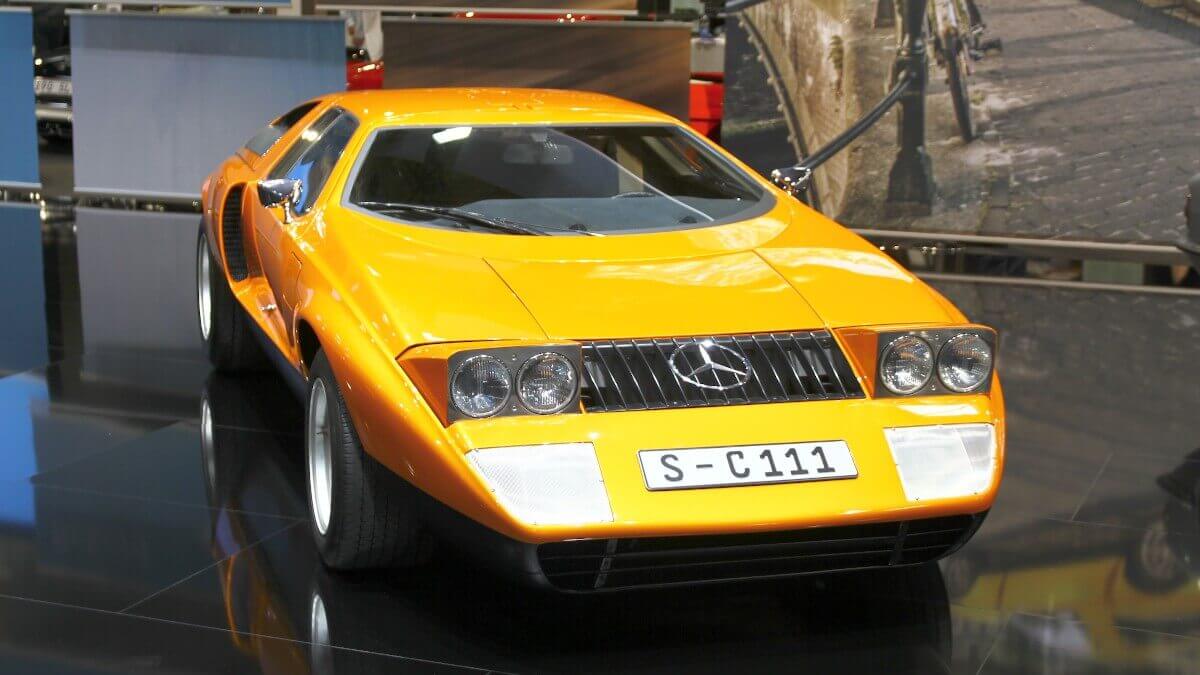



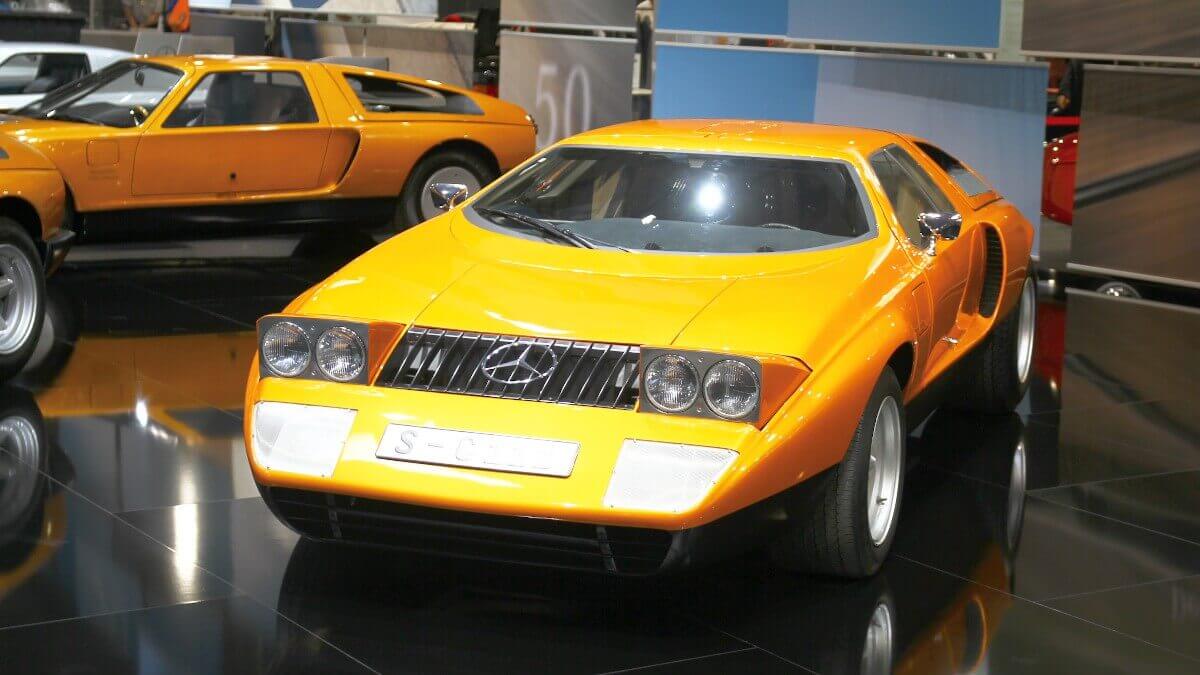



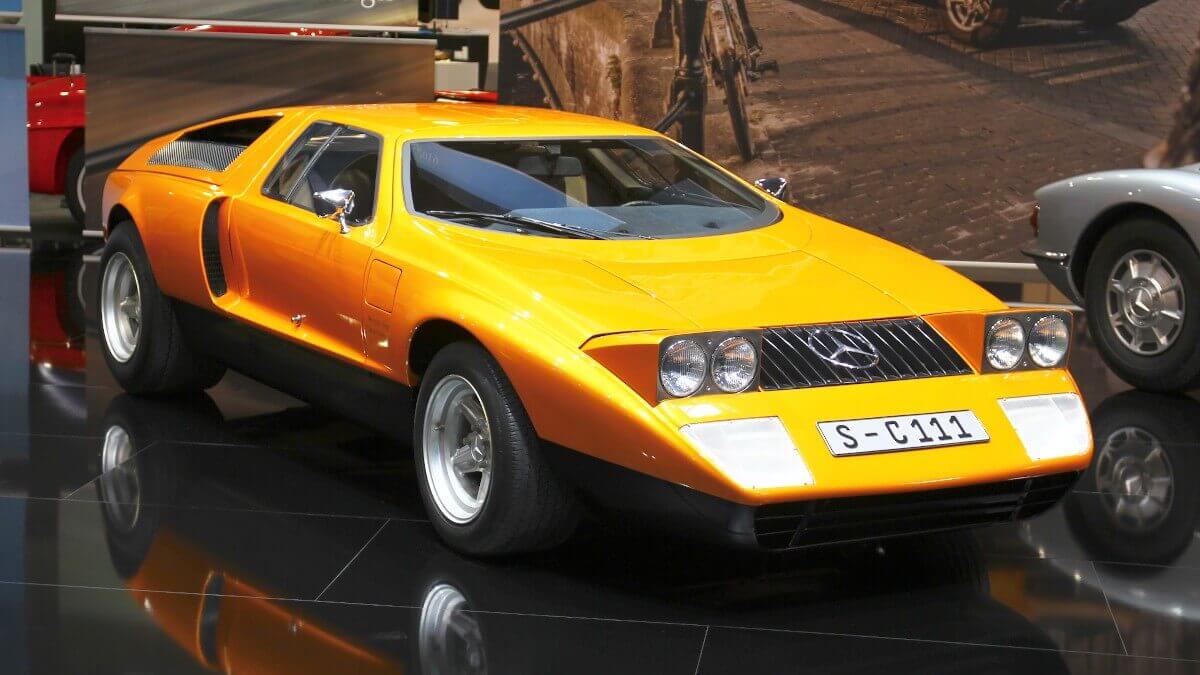



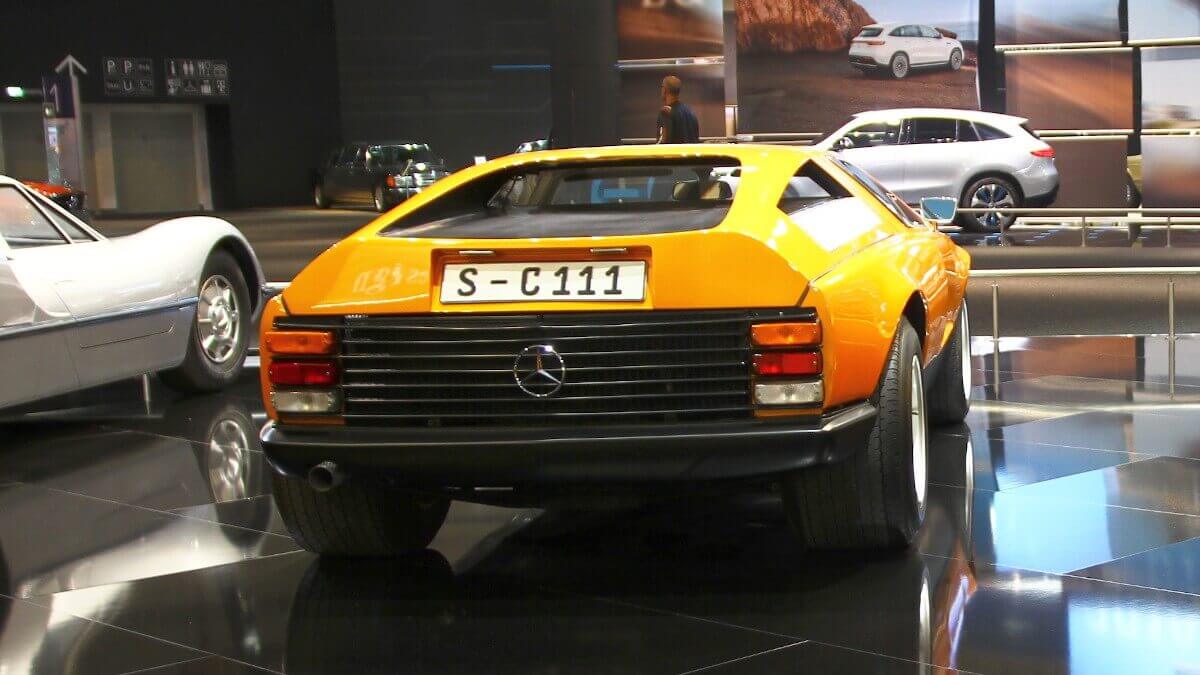



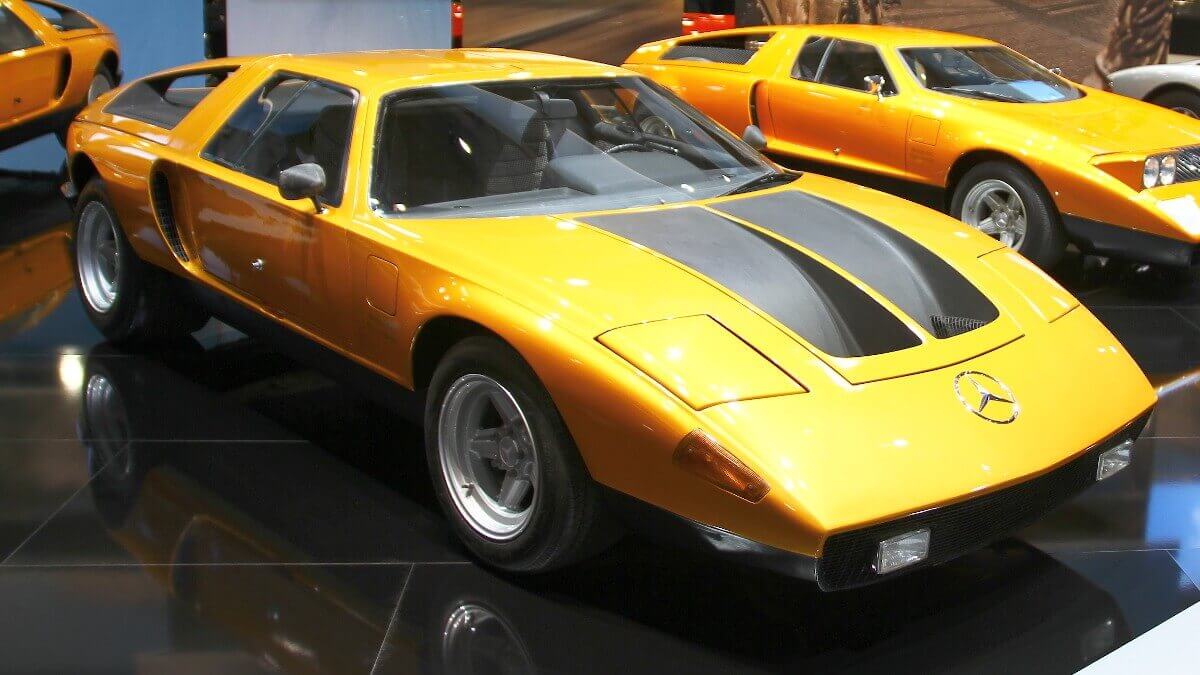



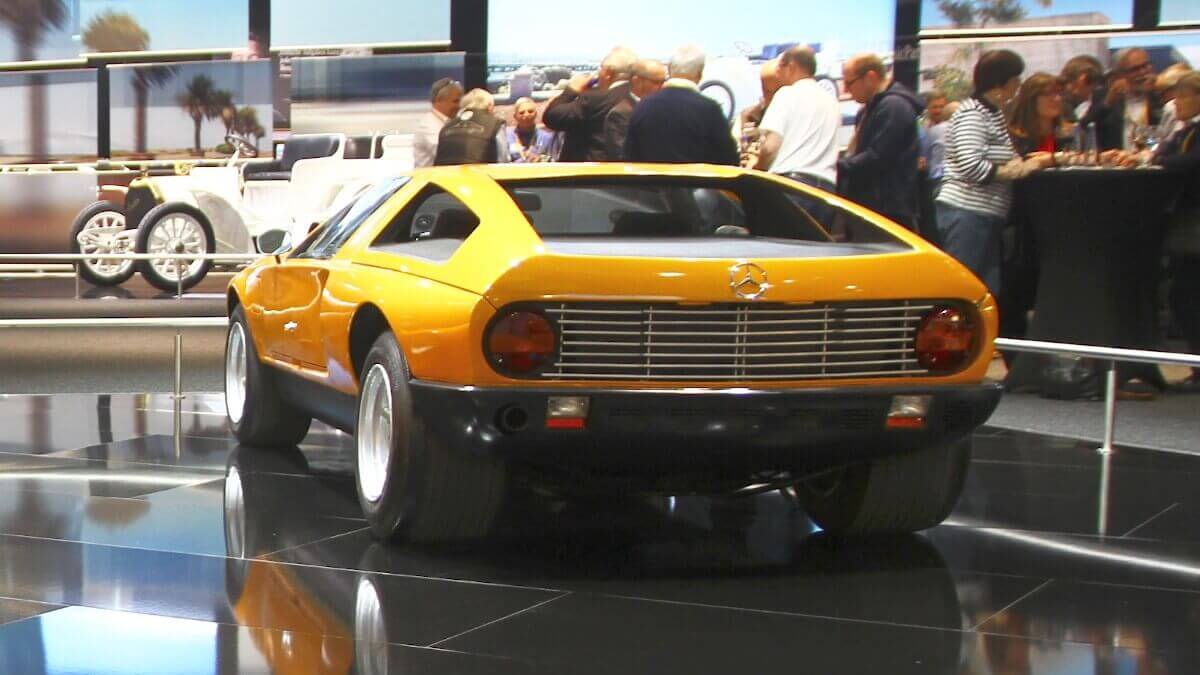



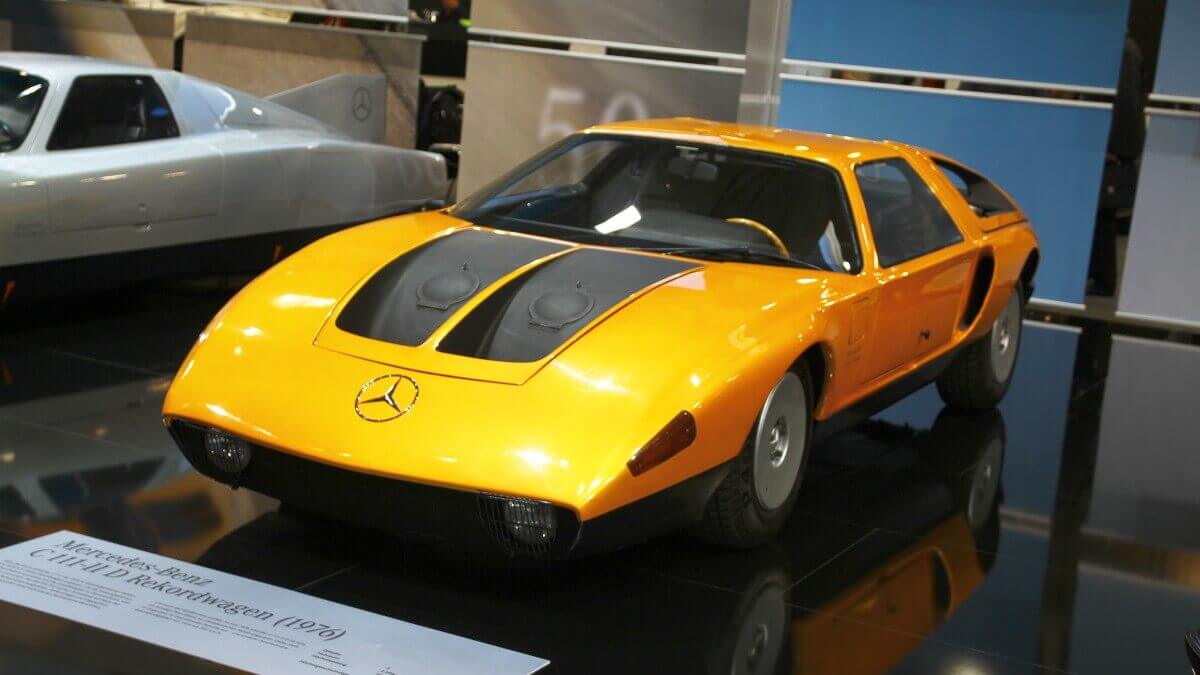



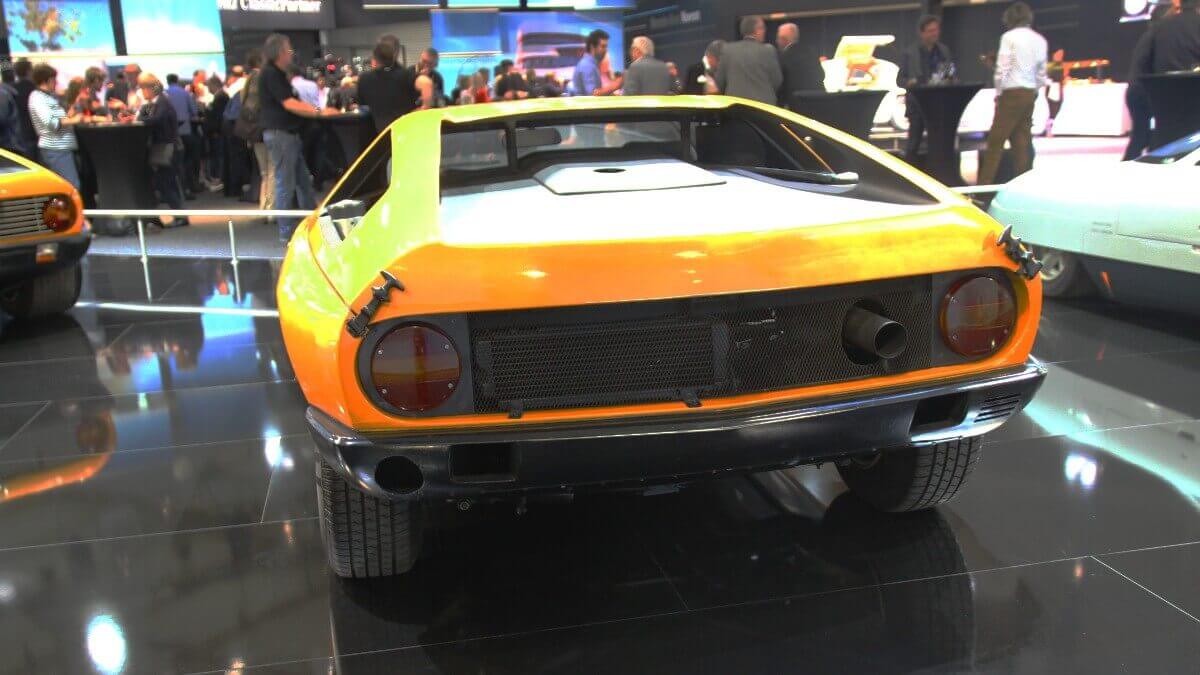



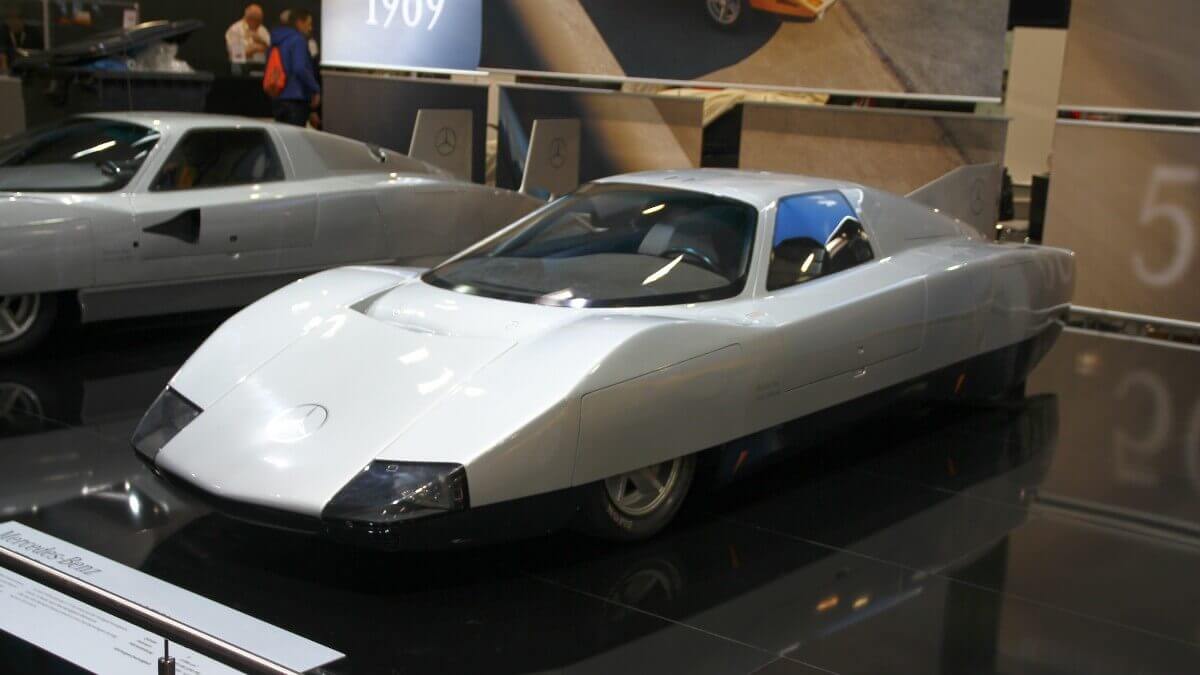



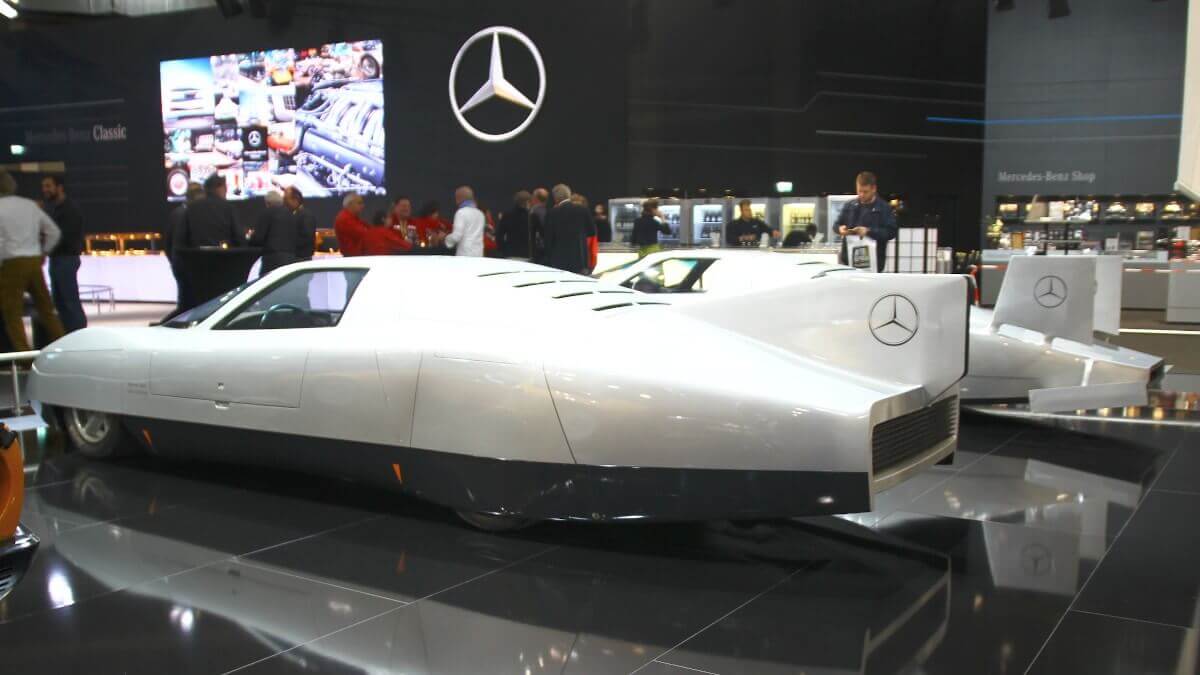



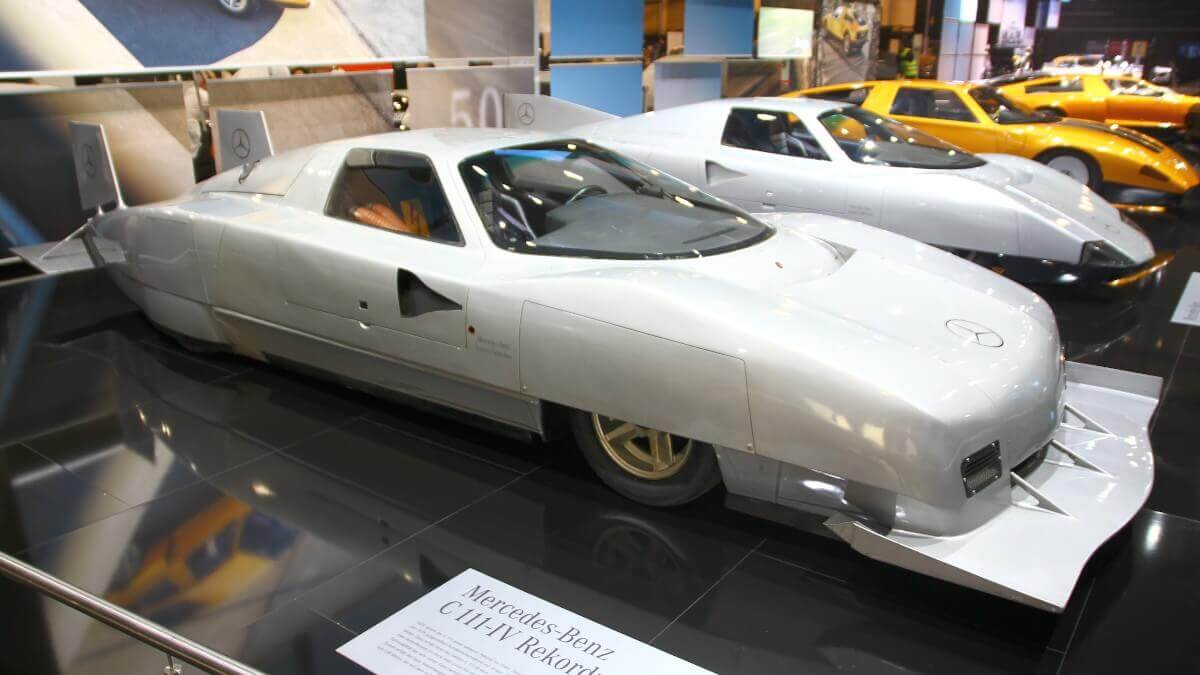



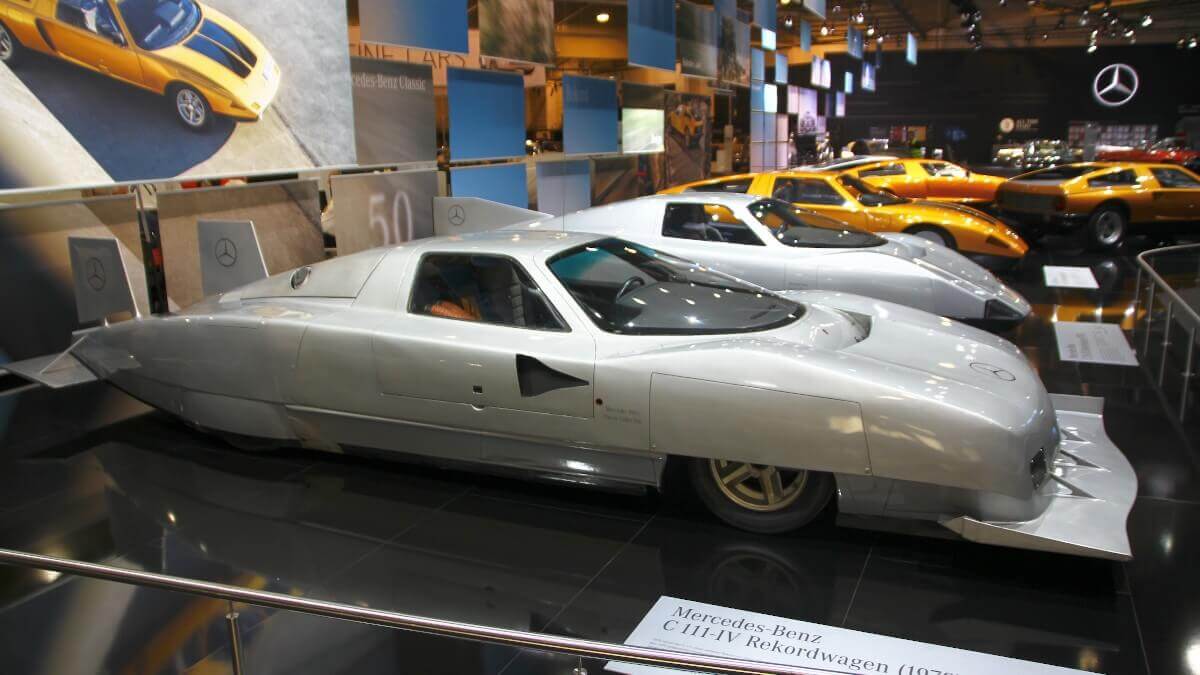



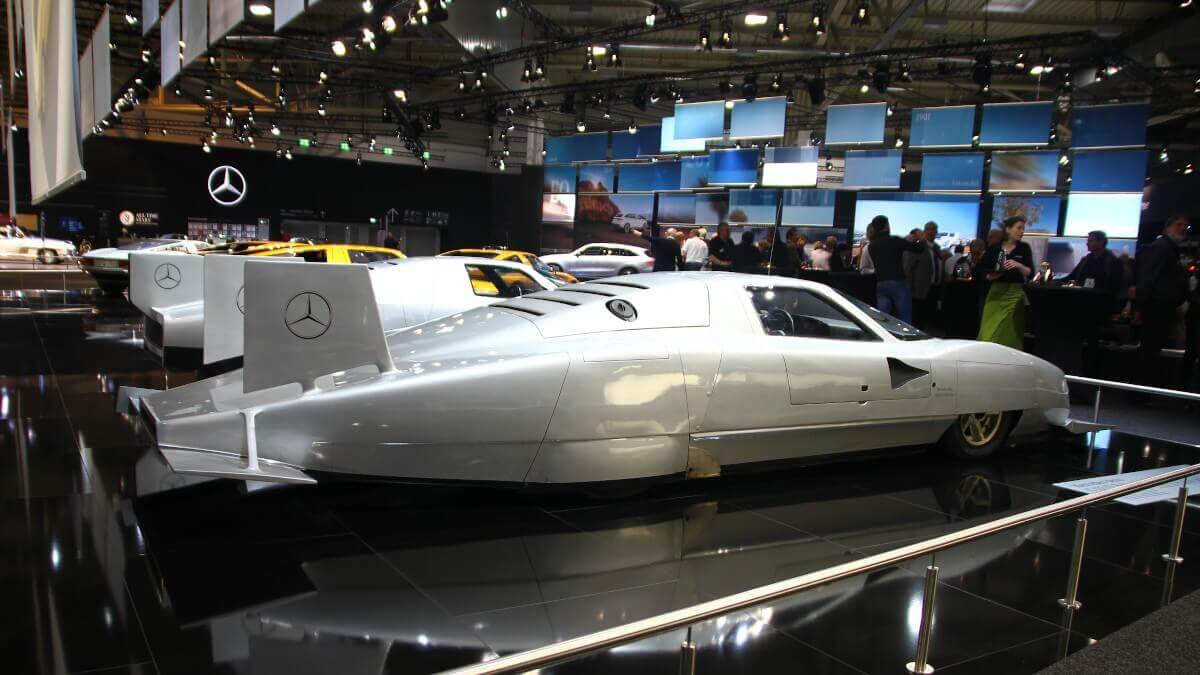



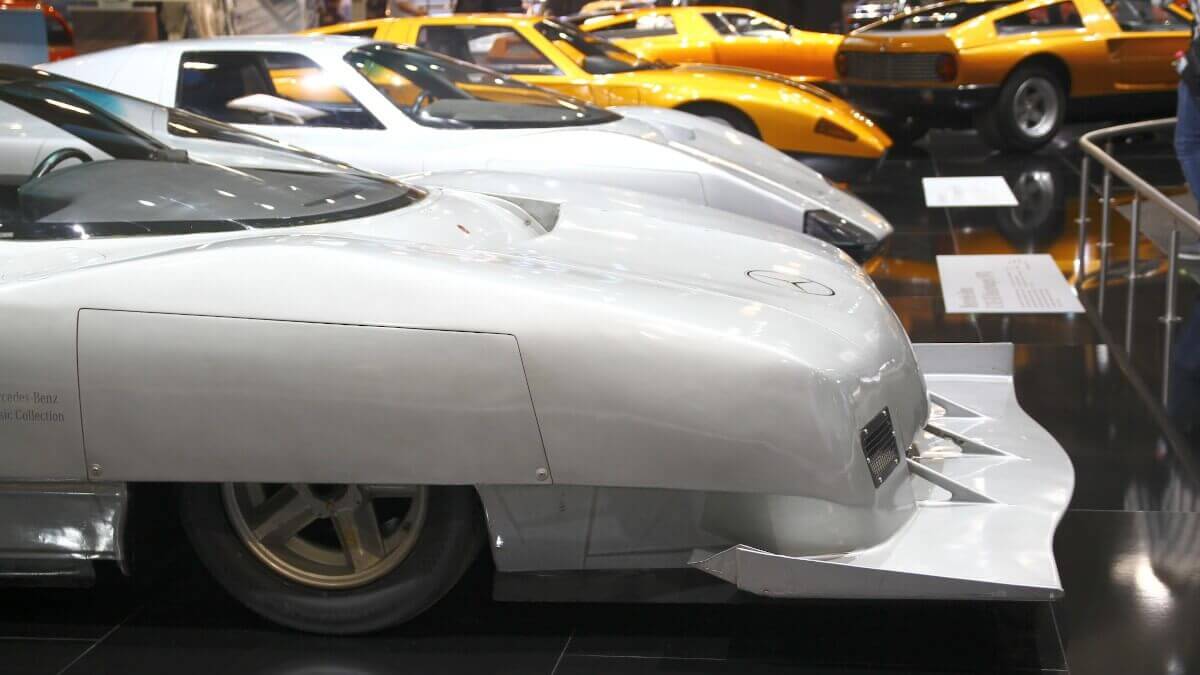



Nevertheless, the supercar was presented in a further developed, more elegant second version at the Geneva Motor Show in March 1970. In addition to improved aerodynamics and modified air routing to the radiators, a rotary engine with four instead of three rotary pistons was now used behind the passengers. As a result, the output increased from 280 to 350 hp and the possible topspeed from 260 to 300 kph (from 161.5 to 198.8 mph). From standstill to 100 kph (62 mph), only 4.8 seconds elapse. The original version of the C111 was gradually phased out. Of the seven cars built, today only two still exist, one of which has been visually adapted to the second generation. This car was on display at the Techno Classica in April alongside the SLX study. Mercedes-Benz still owns all six cars of the C111-II. Due to the poor stability, the high fuel consumption and the oil crisis at the beginning of the 1970s, the testing of the rotary piston engines at Mercedes-Benz was discontinued in 1973, although they were quite convinced of the driving dynamics. However, the mid-engined sports car was still used as a testbed for various normal engines up to the V8. In 1976, a C111-II was converted to a five-cylinder turbodiesel engine with 190 hp from three liters of displacement, which was originally only 80 hp in the 240 D 3.0 (W115 /8) without turbocharging. At the same time, the folding headlights and exterior mirrors were removed in favour of lower drag. In June of the same year they rented the round circuit of Nardò in southern Italy for a 64-hour endurance test with four factory drivers. During this period, 16 international speed records were set, reaching average speeds of more than 250 kph (155 mph).
Although the C111-IID, as the diesel record car was internally called, was actually the end of the C111 program, Mercedes engineers continued their research in the background – spurred on by the records broken and the advertising value for cars with diesel engines. At the beginning of 1978, the C111-III finally stood on its wheels as a further development, shining for the first time not in orange but in the classic metallic silver of the legendary German racing cars. The three liter turbodiesel engine continued to serve as the drive, but now with 230 hp. Optically the two built C111-III differed already clearly from the before known versions and by their covered wheels and an air guiding fin on the engine cover made the fact clear, that street use or series production wasn’t planned at all. Instead the C111-III wanted to set further diesel world records and returned to Nardò in April 1978. This time the long distance journey there lasted only 12 hours. Nevertheless nine international records were broken and due to the low drag coefficient of only 0.183 an average speed of 321.9 kph (200 mph) over 500 kilometers as well as 316 kph (196 mph) over the full 12 hours could be achieved. On the basis of one of the two C111-III the C111-IV was developed for 1979, which should drive to more records, however no longer in the diesel class, but with a gasoline engine. In the wind tunnel further precision work took place, which led to a large front spoiler and two fins at the rear. The engine was a 4.5-liter V8 engine, which was also available in the SL and S-Class at that time. In the record hunter, the displacement was increased to 4.8 liters and two turbochargers were installed, resulting in an output of 368 kW/500 hp. Mercedes-Benz booked the track in Nardò again and achieved there on 5 May 1979 a new average speed record on a closed circuit of 403.978 kph (251.02 mph).
Today, the Mercedes-Benz C111 is one of those sports cars that many collectors would like to have in their garage. In 1991, the concept car C112 was introduced as an indirect successor with the V12 engine from the then new 600 SE, but it also never went into production despite great demand. A production gullwing door car with the star logo in the grille wasn’t available again until the SLS AMG in 2009.
Images: Matthias Kierse




